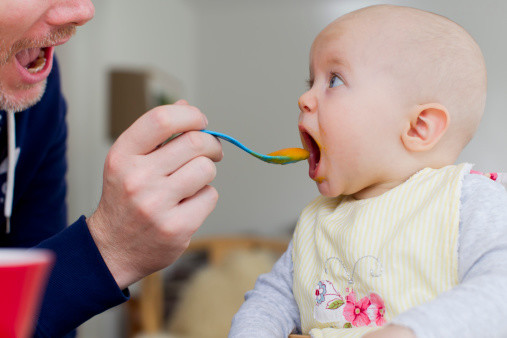 What is the best way to start lure? Photo: Getty
What is the best way to start lure? Photo: Getty
The first dishes are crumbs
Vegetable purees and cereal porridges are the main onesdishes for beginner gourmets. But where to start? If the baby is underweight or has problems with stool, you should choose porridge as the first dish. If the baby is healthy, rosy-cheeked, and the arms and legs are decorated with cute folds, his first experience in adult nutrition should be vegetable or fruit puree. Traditionally, the baby's first treat is a mashed green apple or pear. Babies eat such complementary food with pleasure, and the benefits for the body are obvious. These fruits contain a lot of fiber and have a positive effect on digestion. But there is a certain minus in such first complementary food. After fruit, the baby may refuse healthy, but unsweetened vegetables. Therefore, for a healthy baby, and especially with excess weight, it makes sense to start with puree of broccoli, cauliflower, zucchini, squash or potatoes. At first, the baby is offered one type of vegetable. No allergic reaction or intestinal upset? You can feed puree from another vegetable crop or even make a mix. If the child is weak, his first dish should be porridge. What kind of porridge should you start with? It is better to prefer dishes from one type of grain that do not contain lactose, sugar and gluten. Ideal options for porridge: - buckwheat; - rice; - "Hercules"; - corn. The groats for them should be as finely ground as possible. You cannot sweeten the dish, otherwise the child will refuse unsweetened vegetable puree later. Cereals containing gluten can only be introduced for children over eight months old. If you start feeding them earlier, allergies and intestinal problems may occur. When the baby is six months old, you can offer him dairy products, for example, homemade cottage cheese. A month later - puree from lean meat. After another 30 days - fruit juices. You can try offering soft white sea fish to a nine-month-old baby.
When to start lure
The earliest time to introduce complementary feeding depends onwhether the baby is breastfed or bottle-fed. For those who are breastfed, the introduction to adult nutrition occurs at the age of six months. It is during this period that the baby begins to experience a deficiency in essential vitamins and other elements. Artificial babies need to be fed at 4–4.5 months. Their intestinal immunity is formed earlier under the influence of mixtures, but the lack of valuable substances also occurs faster. Any new products can only be offered to a completely healthy baby. You cannot introduce complementary foods during illness, as well as before and after vaccination. Read more:









